One of the trickiest things in all of wedding planning: the correct wording on your invitations! Have you already thought about it?
Let’s start with who is actually HOSTING your event (aka who’s paying for it…). If that is your parents, THEY are officially inviting. So, here we go:
Wedding invitation wording starts with a host line. Traditionally the bride’s parents are hosting, and so their names come first. In any case, listing the names of both sets of parents is okay and a nice thing to do. If both you two AND your parents are contributing, you could say, “Together with their parents” or “Together with their families.”
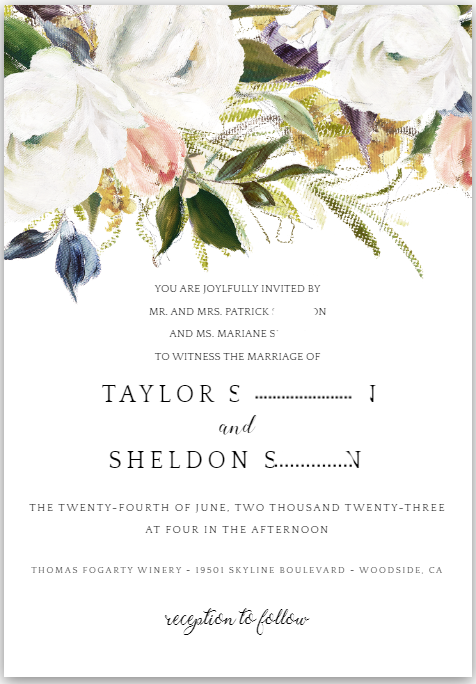
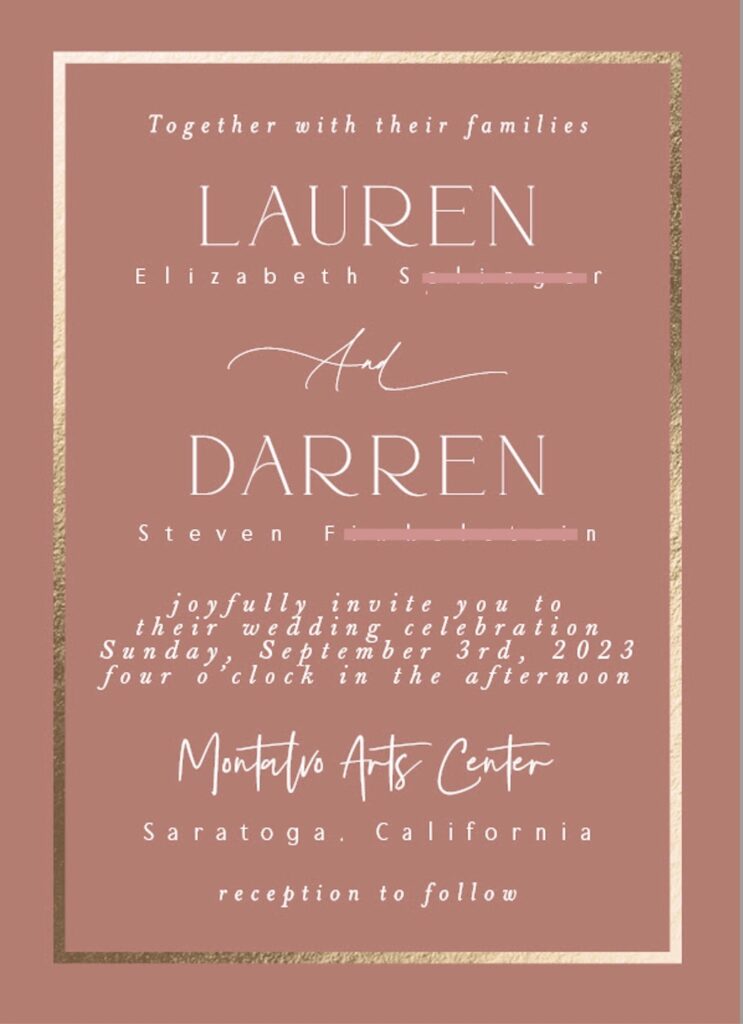

What if one or more of your parents are no longer with us? A common way to honor a deceased parent is to mention him/her with the couple’s names: “Lauren Martinez, daughter of Marta Martinez,” or “Lauren Martinez, daughter of Robert Martinez and the late Marta Martinez.”
Next comes the request line where you actually extend the invitation to attend your wedding – and the wording is different for a church wedding vs. a wedding outside a house of worship.
- Church: “The honor of your presence” is traditionally used to denote a religious service. Using the traditional British spelling “honour” is meant to evoke a more formal feel. (Note: If you are using “honour” on the invitation, you need to likewise spell “favour,” as in “favour of your reply,” on your RSVP card.)
- Outside of a house of worship: “The pleasure of your company” is used to denote a non-religious ceremony venue.
Here are more wording options: “request the honor of your presence” or “the pleasure of your company”; “invite you to celebrate with them.”
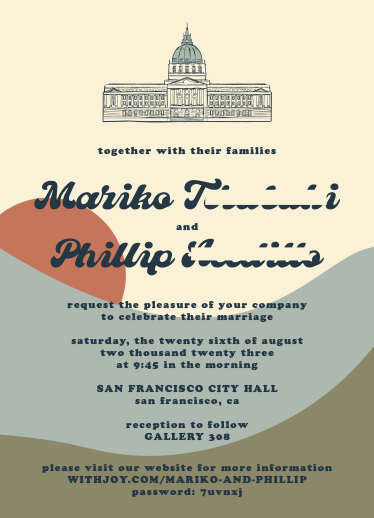
After that comes the action line, explaining what the event is about:
- “at the marriage of their daughter” (if the bride’s parents are hosting) or “of their children” (if both sets of parents are hosting)
- “at the celebration of their marriage” or “their union” (if the couple is hosting)
And finally, your names! Easy, right? But what about sequence, middle names Yes or No, last names? Here are the basics:
- For different-sex couples, the bride’s name typically goes first, then the groom’s name. If the bride’s parents’ names are listed at the top, it is sufficient to give just the bride’s first and middle name (without last name), and the groom’s name is either stated in full, or his first and middle names are listed followed by the line “Son of Mr. & Mrs. Stephen Wong.”
- For same-sex couples, names should be listed in alphabetical order by last name – or based on what looks best with the design of the invitation.
- In general: For a less formal feel, use first names only.
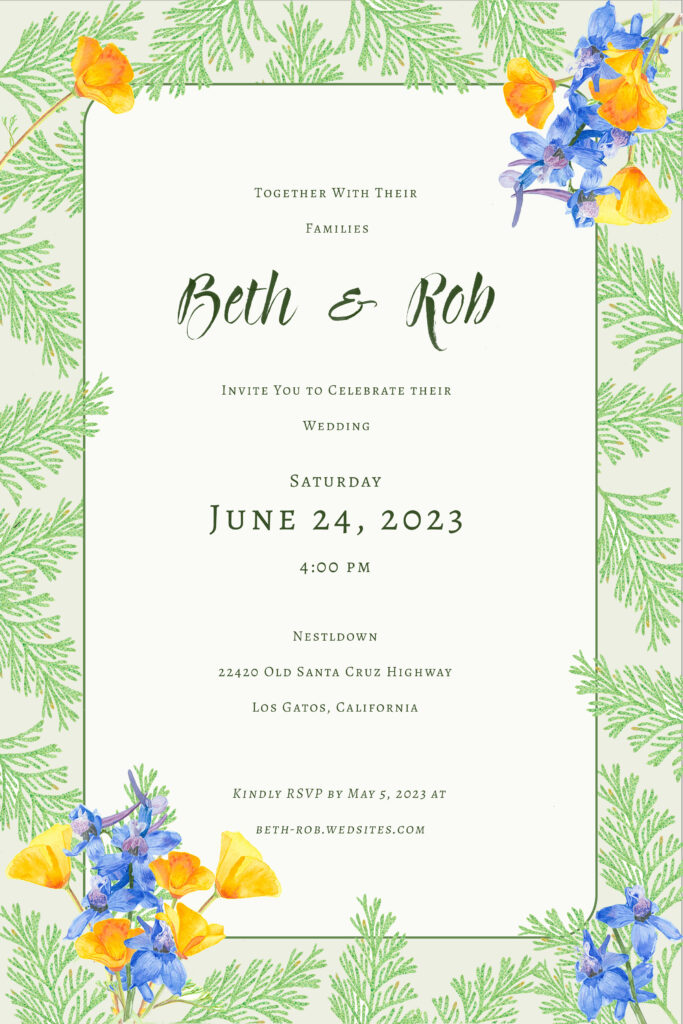
What else? Date and time! They should be spelled out in full, e.g. “Saturday, the fourteenth of September, two thousand twenty-four, at half after five in the afternoon.” (Day of the week and the Month capitalized, year in lowercase).
Do not forget to state the location of your wedding venue, with the name of the venue and city and state (spelled OUT!) in separate lines; no street address and ZIP code, unless it is a private residence.
State either “reception to follow” or “dinner and dancing to follow” (if at the same location as the ceremony) or, if the reception is elsewhere, state the reception venue in the next line or on a separate enclosure card. More examples of reception wording: “Cake, wine and merriment to follow” or “dinner, dancing and Happily Ever After to follow.” Especially if you are NOT offering a full dinner, here is your opportunity to let your guests know: “Please join us for small bites, cocktails and dancing after.”
You should mention the dress code, too, on the line below the reception location: “Black Tie” (aka tuxedos and floor-length dresses); “Formal attire” (suits and dresses); “Cocktail attire” (suits/dress shirt/necktie and short festive dresses) or “Casual” (basically anything…)
And that’s it for your invitation card!
Chances are, there is more information to convey, so use an enclosure card for that (directions to the venue, advice re local climate, uneven terrain, transportation – like, “Uber does not service this area”…), and you might also list your wedding website and/or a QR code for it on this card.
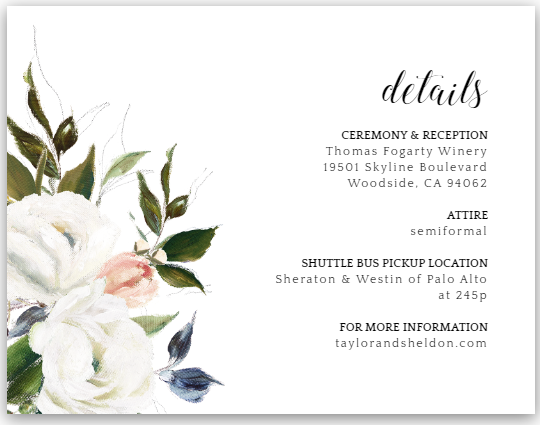
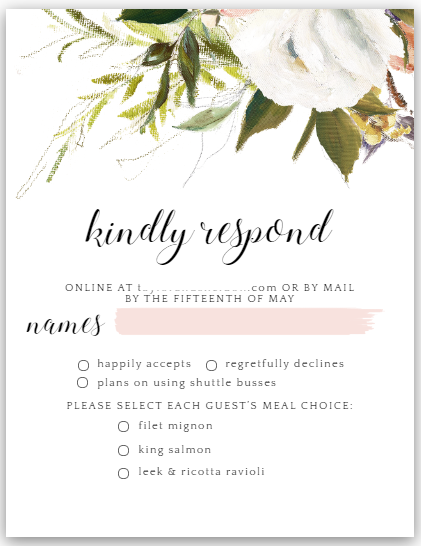
RSVPs could either be handled via an enclosed RSVP card with pre-addressed, pre-stamped envelope or electronically via your website. Clearly state the RSVP deadline; ask for the names of those attending and for their meal choices. In terms of wording, be consist in your spelling: “the favour of your reply” matches “honour of your presence” – or simply say “kindly reply.”
Now you know all the basics and are ready to get started!!
